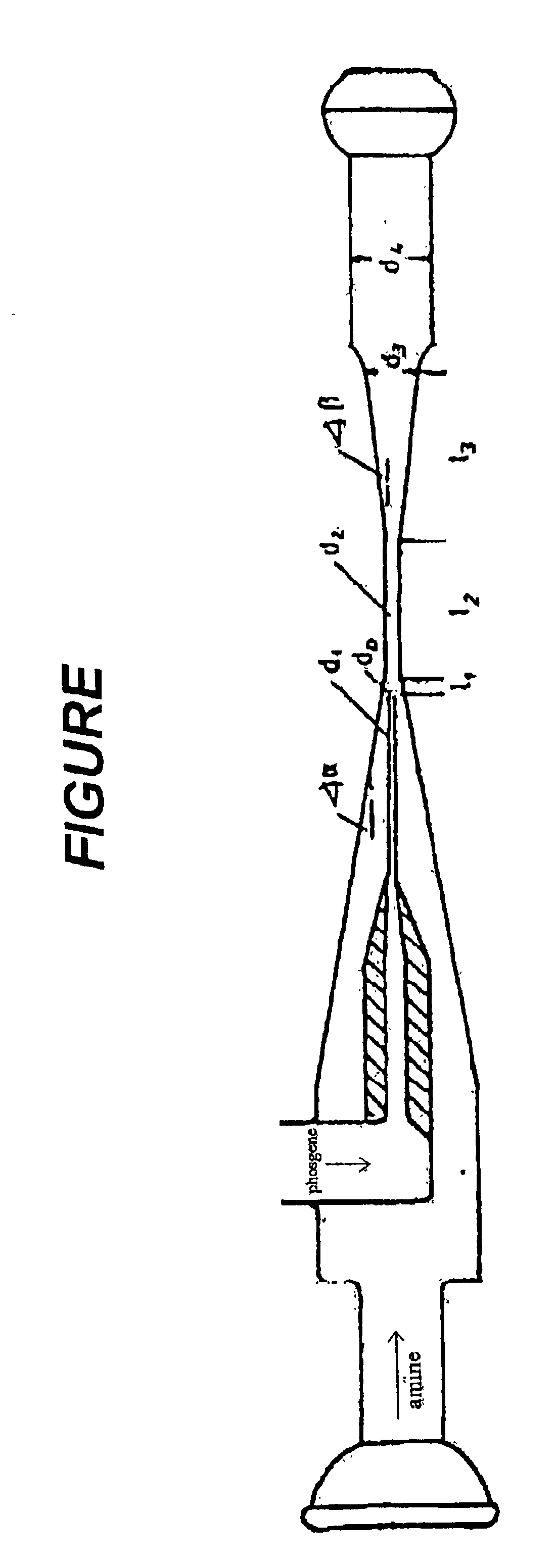Process for preparing (cyclo)aliphatic isocyanates
a technology of isocyanates and cycloidiisocyanates, which is applied in the preparation of isocyanic acid derivatives, memory adressing/allocation/relocation, instruments, etc., can solve the problems of contamination of the reactor, large safety measures, and the only batch operation is suitabl
- Summary
- Abstract
- Description
- Claims
- Application Information
AI Technical Summary
Benefits of technology
Problems solved by technology
Method used
Image
Examples
example
The process according to the invention is explained in more detail by the following Example.
Into a mixing tube with a downstream diisocyanate condensation step and a phosgene adsorption tower filled with activated carbon, 5.91 mol / h of phosgene, which had been heated to a temperature of 400° C. at a pressure of 1100 mbar in an upstream heat exchanger, flowed continuously through a nozzle with an external diameter d1 of 1.7 mm and an internal diameter d0 of 1.0 mm, which projected into the mixing tube. At the same time, a mixture of 1.26 moles of gaseous hexamethylene-diamine and 1.25 moles of nitrogen, heated to 400° C., was passed hourly into the mixing tube through the annular gap between nozzle and mixing tube. The diameter of the mixing tube varied along the longitudinal axis by decreasing down to a diameter d2 of 2.5 mm, at an angle α of 10°, upstream of the nozzle and up to 1.5 mm downstream of the nozzle as shown by length l1 in the FIGURE, and then remaining constant along l...
PUM
| Property | Measurement | Unit |
|---|---|---|
| temperature | aaaaa | aaaaa |
| angle | aaaaa | aaaaa |
| temperature | aaaaa | aaaaa |
Abstract
Description
Claims
Application Information
 Login to View More
Login to View More - R&D
- Intellectual Property
- Life Sciences
- Materials
- Tech Scout
- Unparalleled Data Quality
- Higher Quality Content
- 60% Fewer Hallucinations
Browse by: Latest US Patents, China's latest patents, Technical Efficacy Thesaurus, Application Domain, Technology Topic, Popular Technical Reports.
© 2025 PatSnap. All rights reserved.Legal|Privacy policy|Modern Slavery Act Transparency Statement|Sitemap|About US| Contact US: help@patsnap.com

